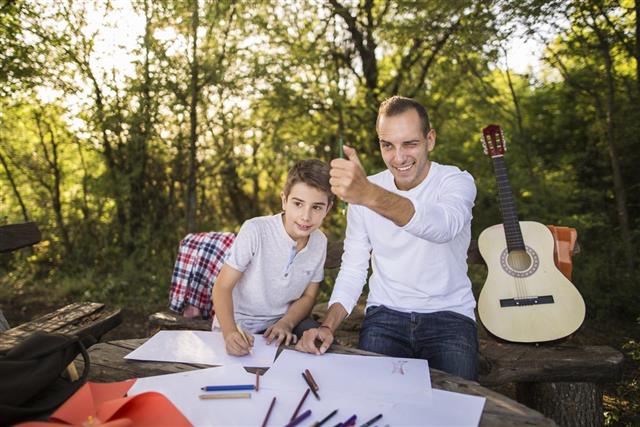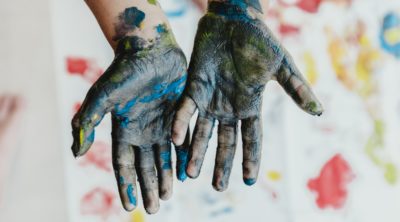
Freehand drawing needs a lot of practice, patience, and good observation skills. Mentioned in this article are important tips that will help you to get better at this hobby.
Freehand drawing is a form, which is done only by means of hand and eye coordination. In simple terms, this type of drawing is done by a person without use of any tools like rulers, protractor, etc., or by using tracing or any other such techniques. Many people who enjoy drawing as a hobby use this method of drawing, just by carrying a sketchbook and pencils, and sketching any subjects they like. If a person asks you while looking at a drawing, ‘did you do it freehand ?’, it means that did you draw it without the use of any tools or mechanical devices.
For freehand sketching, one needs to have good sense of proportions, a smooth motion of hand that allows to draw neat lines, and some shading skills to give more depth to the drawing. These skills take time, patience, and practice, and advice from a teacher or an artist will help a person to learn freehand drawing by the right way. Whether you are an absolute beginner, or you have some experience in drawing, provided below are some very useful sketching tips that will help you to get started, or get better at this technique.
Useful Tips
Adobe has a freehand drawing software, on which you can practice drawing freehand. But, most artists and teachers always recommend to practice the skills first on paper, and then on any software. Hence, before going digital, stick to the basic drawing tools, which are the pencils and papers. Thus, buy a sketchbook that has A4 sized papers, few 2-3 graded pencils of 6B and 8B, and start drawing. Avoid using eraser as much as possible; if you are a complete beginner, then eraser is allowed for first 2-3 weeks. After this period, you have to stop using it so that you get the confidence.
Keep a Blank Mind and Loosen Up
On a paper, draw circles in one smooth motion, do not rest your palm on the paper. So, hold the pencil with your fingers, and draw circles all over the paper. In a similar manner, draw horizontal, vertical, and diagonal lines on the same sheet of paper. This will help to keep a blank mind, and loosen up your drawing motions; you will be more confident, and the lines will come out better by practicing this technique. Do this on 2-3 papers everyday, and as your drawing skills get better, you can continue this only on one paper everyday.
Observe Everything You See
Now, the second important factor that helps to draw better is your observation power. Continuously go on observing everything closely, how an old man looks, how a young person looks, how a child looks, etc. You can also observe their clothing, expressions, gestures, etc. Take a good look at the animals in the surrounding if any. Observe trains, buses, buildings, natural landscapes, trees, birds, cityscapes, etc.
Carry Your Sketchbook and Practice
Always keep a sketchbook and pencils with you (don’t forget a sharpener or cutter too). Watch people at the train station, and sketch them. If you are a total beginner, then forget about how neat your drawings looks; firstly, just scribble the subjects, and later on, your skills will improve. Thus, scribble birds, people, landscapes, buildings, etc. If your subjects are not stationary, and it is difficult for you to observe moving subjects, then by using a camera (digital or analog), click pictures of the subject. Once you are at home or at a quiet place, observe the subject, and then proceed to draw it.
Concentrate on Proportions
If you have been scribbling for long, and your drawings look weird, concentrate on the proportions. To understand human anatomy, refer to some books or online tutorials, which will tell you important guidelines on proportions. For example, the distance between two eyes is equivalent to that of one eye. The height of a human totals up to 7 and a half heads. If you are drawing structures/still life, then sit at a comfortable distance from the subject, hold your pencils in front of you, measure the object’s height using your pencil, and draw it on the paper.
Add Some Depth to Your Drawings
Once you get better at your drawings, learn shading, which is simply adding lights and shadows to your sketches. Observe where the source of light is, and where are the shadows of an object falling on. Then, sketch the shadows, highlights, and other tones on the subject, to add more depth to it.
Seek Advice
If you get stuck on some subject and need advice, or your drawing don’t seem to improve, then instead of sulking, seek advice from artists or drawing professionals. However, avoid seeking advice from too many people, as too many suggestions coming from different people can confuse you. You can show your sketches to a friend who is good at sketching, show it to a drawing teacher, or even put them on forums to get advice from other artists.
Thus, remember the above tips, and most of all, enjoy drawing whatever you have in your mind.











